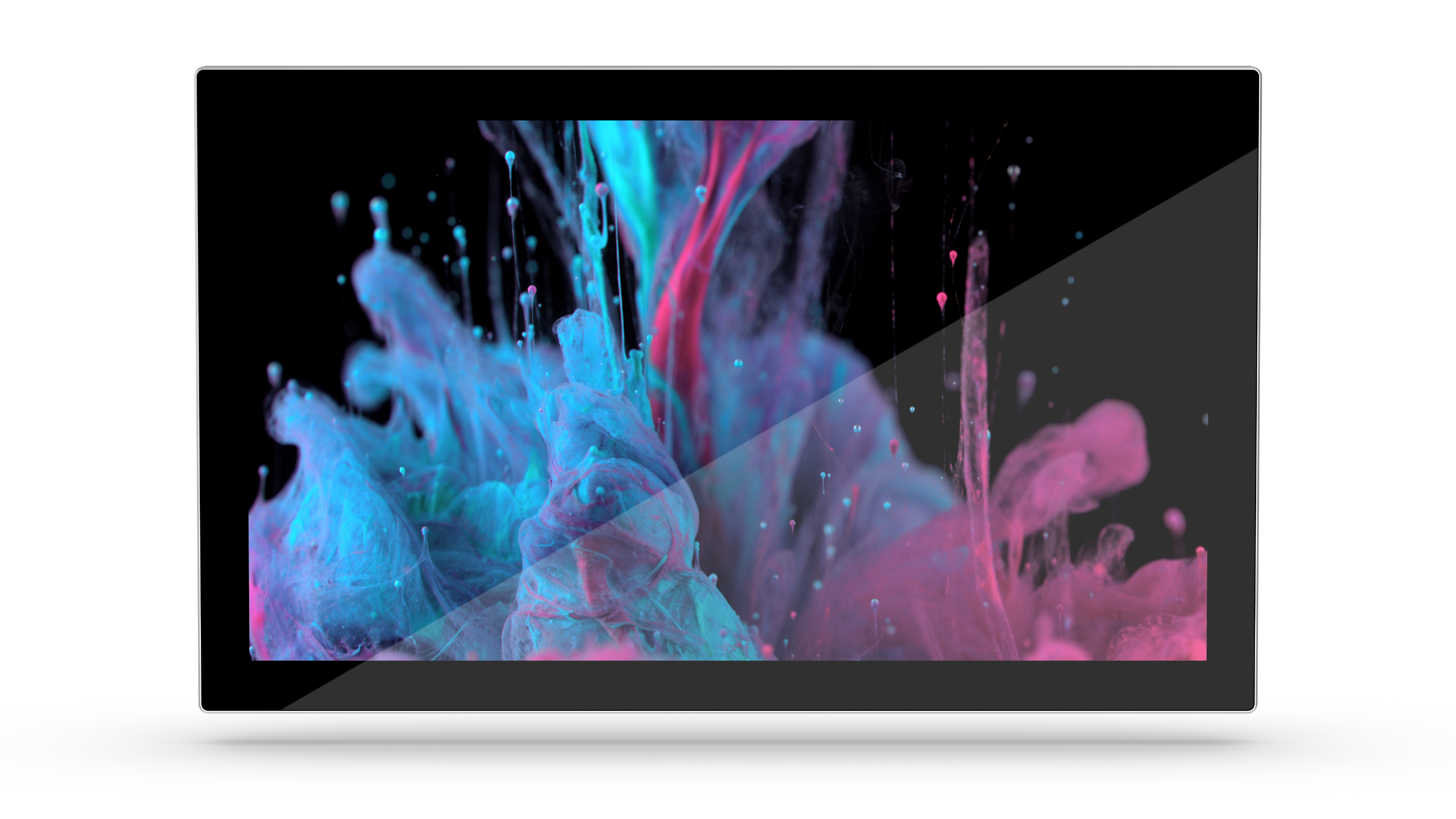The process of optical bonding (Optical Bonding = transparent liquid bonding) is not new, as it has been used for a long time in the military sector as well as in industrial environments and for some time now also in medical technology. Optical bonding is an adhesive technique that is used to connect optical components such as touch sensors and glass displays to each other with a particularly highly transparent liquid adhesive without an air gap.
Key Benefits
Optical bonding with PCAP touch screens leads to the following significant advantages:
- Improvement of contrasts
- Reduction of reflection
- highly resistant to vibrations, thermal stresses and shock loads.
Which touch applications benefit from optical bonding?
There are various application situations that benefit from the optical bonding process. These primarily include displays that are used outdoors, as well as function in high ambient light and must be readable. A few examples of use are: vehicle displays and digital signage. Defibrillators, marine displays, aircraft displays, and information and entertainment electronics on trains and other public transport.
Consider risks
As a rule, the result of the optical bonding process should be a display that is optimally readable even in extreme lighting conditions. If you decide to use optical bonding, you should therefore contact a touchscreen manufacturer with sufficient experience in this area. This is because the risk of air bubbles forming is quite high, especially with larger touch displays.
The following factors negatively affect the result if the manufacturer is not properly versed:
- Full-surface bonding is much more complex. The adhesive must be highly transparent so that brightness and contrast are not affected
- the UV radiation must not lead to discoloration
- No air pockets must occur during gluing
- Mechanical influences (expansion due to temperature fluctuations, shock and vibration) must be taken into account and compensated for
Learn more about optical bonding on our website.

